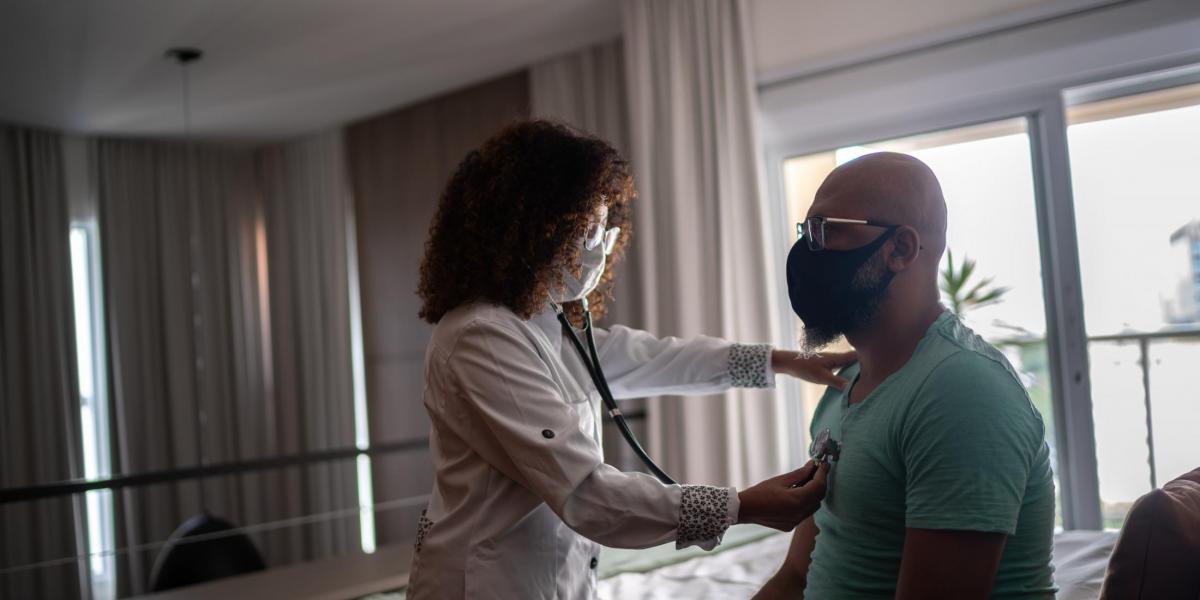Partner Content
We get it—you don’t want to make any unnecessary trips out in public during the COVID-19 pandemic. You may be thinking that you’ll be fine if you delay your annual physical or care for a chronic condition until COVID-19 appears less threatening—perhaps after more of us are vaccinated. However, according to Mark R. Vesely, MD, associate professor of medicine at the University of Maryland School of Medicine and an interventional cardiologist at the University of Maryland Heart and Vascular Center, that way of thinking can be especially dangerous when it comes to your heart.
We asked Dr. Vesely about how the pandemic has changed cardiovascular care, what people need to know about COVID-19 and their hearts, and what hospitals have been doing to keep patients safe, including conducting some appointments as telemedicine visits.
What is the biggest concern you have as a cardiologist during the COVID-19 pandemic?
I’m extremely concerned about patients who are foregoing evaluation and treatment of their heart disease out of fear of coming to the hospital because of COVID-19. At the Heart and Vascular Center, some of our patients have said that they have stayed home and tried to ignore or bear through symptoms they would have normally sought help for.
We are seeing across Maryland and the country that the number of patients coming to the hospital with an acute heart attack is less than what was typical before the COVID-19 pandemic. Yet more patients are having cardiac arrest and dying outside of the hospital. We think some of this is likely due to the delay in seeking help for chest pain. By not seeking medical attention quickly, a patient’s chance of getting even sicker or dying of a heart attack or stroke is much higher.
How else has COVID-19 changed the practice of heart care?
We are learning that people who have active COVID-19, as well as some considered to be recovered from the illness, are developing problems related to heart function. We have seen some people who are very sick with active COVID-19 having issues with blood clots. Unfortunately, these clots can lead to heart attack or stroke. Some patients in this situation are very challenging to treat. However, the sooner they receive medical care, the better our chances of helping them survive and thrive afterward. Other patients, including many who were not especially sick with the initial illness, are having long-term problems with chest pain and fatigue. Some patients’ MRI studies show heart inflammation. This can continue for months after their initial bouts with COVID-19. We still have much to learn about how to best help these patients, but a delay in their care is never ideal.
What is the problem with delaying care for a heart condition or vascular disease?
For decades, cardiovascular specialists have touted the phrase, “Time is muscle,” and it’s true. The longer the delay in care for an acute heart attack, a larger portion of the heart muscle will die. The more heart muscle that dies, the greater the likelihood that a patient will get very sick or even die. The same goes for stroke, where we say, “Time is brain.” If you or a loved one has symptoms of a heart attack—chest pain, pain in the neck or jaw, shortness of breath, or even unexplained heavy sweating, to name a few—call 911 right away.
Patients with chronic cardiovascular conditions, such as congestive heart failure, heart valve disease like mitral regurgitation and aortic stenosis, aortic aneurysm, peripheral arterial disease, or others, need to keep up-to-date with their care. If they don’t, they and their doctors won’t know if their conditions are getting worse. Treatment after their disease has further progressed may be more difficult and not as effective. These patients may also be putting their lives in danger. The risks of foregoing care for these chronic conditions are much higher than the risk of potentially catching COVID-19.
What is your team doing to protect patients and provide safe care during the pandemic?
At the University of Maryland Heart and Vascular Center, we have taken measures to enhance safety in both the hospital and outpatient clinic settings. Providers and staff are all required to strictly practice safe distancing. We are also washing our hands more frequently and using other measures to decrease the chances of exposing anyone to SARS-CoV-2, the virus that causes COVID-19. All hospital staff and providers also monitor themselves daily for symptoms and exposure to others with COVID-19, and they stay home when necessary. Further, patients with active COVID-19 cases are kept separate from those in the hospital for other reasons. The hospital has also developed patient air-handling and cleaning techniques to minimize the risk of spreading the virus. For patients who need to be seen in person at the clinic, visits are spread out in time and space to decrease contact and exposure. We also provide telemedicine visits so patients can be evaluated remotely to avoid in-person contact.
Tell me more about telemedicine. What types of appointments can be completed remotely, and are they covered by insurance?
Telemedicine visits are now covered by insurance. These visits involve interaction between a patient and provider by either a phone conversation or a videoconference. Videoconference visits are done either with a computer equipped with a camera or by smartphone with an app such as Zoom or FaceTime. Most providers prefer videoconference over telephone-only encounters because they give us a better understanding of our patients’ well-being—and we like to see you too.
There are some inherent limitations in seeing a patient without a “hands-on” exam. However, telemedicine is a good alternative, especially if our patients can supply us with biometric data through heart and blood-pressure monitoring equipment they have at home. Many visits can be completed through telemedicine without a significant difference in the evaluation and care plan patients would have received in person.


